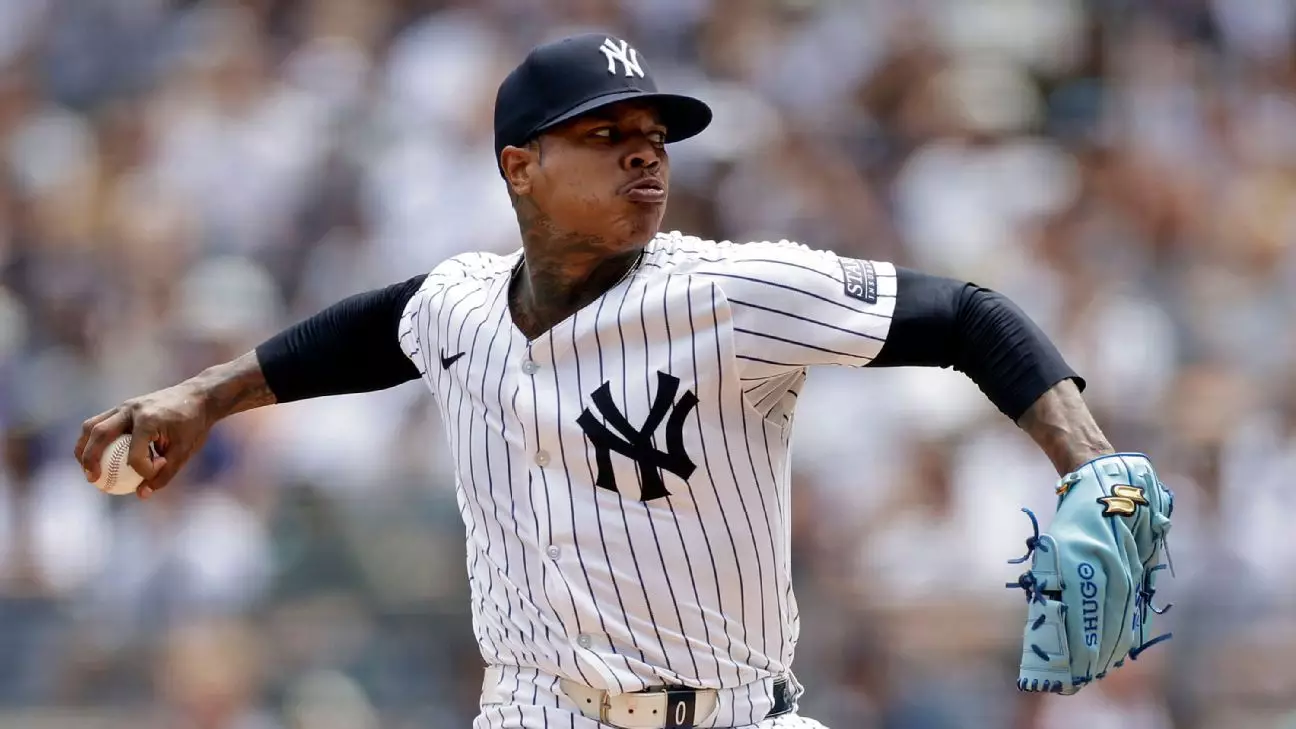The New York Yankees’ decision to release Marcus Stroman exemplifies the team’s often misguided approach to roster management and talent evaluation. Signing Stroman to a two-year, $37 million deal reflected an optimistic gamble rooted in his previous success, notably his All-Star appearance with the Chicago Cubs. Yet, the Yankees’ stewardship failed to recognize the clear warning signs of underperformance and injury vulnerability prior to his signing. It reveals a deeper issue: a reliance on past reputation rather than current production and fit within their strategic framework.
Stroman’s tenure with the Yankees was a turbulent rollercoaster, shaped by injuries, inconsistency, and missed opportunities. The team appears to have overestimated his ability to stabilize the starting rotation, especially given his subpar statistics this season—an ERA of 6.23 in nine starts and an overall 4.69 ERA with the club. These figures, particularly in a high-stakes environment like New York, should have been enough to prompt skepticism rather than a full commitment. Instead, the Yankees doubled down, perhaps believing that Stroman’s veteran experience and former success could turn the tide—a gamble that ultimately failed.
The Coming and Going of a Promising Career
Stroman’s journey with the Yankees underscores a broader narrative of misaligned ambitions and misplaced optimism. His signing was fraught with the expectation of immediate impact, yet his performance was marred by inconsistency and lingering health concerns. The injury to his knee in April sidelined him for more than two months, and even when he returned, he struggled to command confidence on the mound. It’s a classic case of how injuries and poor form can derail what once seemed like a promising career trajectory.
This episode highlights a crucial lesson for teams: the importance of holistic assessment over relying heavily on past accolades. Stroman’s 2023 season with the Cubs was impressive, but that alone did not warrant a hefty contract for a pitcher with injury history and declining effectiveness. The Yankees, in their pursuit of bolstering their rotation, overlooked the signs of diminishing returns. Their willingness to pay the remainder of his salary despite his limited effectiveness suggests a reluctance to cut losses early—a mistake that cost them both payroll flexibility and clear roster space.
A Reflection of Poor Tactical Discipline
The Yankees’ roster moves surrounding Stroman’s release reveal a deeper issue of tactical discipline. While the team has been aggressive at the trade deadline—trading prospects and acquiring impactful relievers—they failed to address core issues at the starting pitcher position appropriately. Stroman was effectively stranded in a rotation that no longer suited his skill set, and the team’s inability to secure a trade earlier in the offseason or during spring training reflects poor foresight.
Furthermore, their reluctance to accept Stroman in a relief role, despite the team’s short-term needs, indicates a rigid mindset that dismisses potential adaptability. Instead, they waited until his performance nosedived—culminating in a 6.23 ERA in his nine starts—to release him, a move that could have been made months earlier to allow both parties to part ways more gracefully. Now, as a free agent, Stroman can seek opportunities elsewhere, perhaps with a team more aligned with his style and health profile, rather than being the scapegoat for the Yankees’ miscalculations.
Lessons Learned and Moving Forward
The Yankees’ handling of Stroman’s tenure is emblematic of a broader pattern of overconfidence and misjudgment. They placed too much emphasis on past success and not enough on current value and future potential. Their strategy exemplifies how even a storied franchise can fall prey to short-sighted decisions in pursuit of immediate needs, at the expense of long-term planning.
For Stroman, this chapter in New York is a harsh reminder of how quickly fortunes can change in professional sports. Once considered a valuable asset, he now faces the uncertainty of free agency, where he must reinvent himself and reclaim his value. Meanwhile, the Yankees must reassess their approach—particularly their talent evaluation processes and willingness to embrace flexibility. Their missteps with Stroman underscore the perils of overcommitting to aging veterans or past glories without considering current form and health, a lesson that should not be ignored if they hope to contend in future seasons.
The collective narrative revealed by Stroman’s brief stint with the Yankees extends beyond a single player—highlighting the importance of strategic humility and adaptability in a sport defined by continuous change. Ultimately, the Yankees’ decision to part ways with Stroman serves as a stark reminder that in baseball, as in all competitive pursuits, resilience and strategic foresight are what separate perennial contenders from those destined for fleeting moments of hope.


Leave a Reply